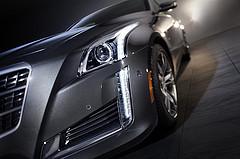by Sonnhalter | Feb 7, 2017 | Marketing Trends, Tradesmen Insights
By Scott Bessell, Idea Builder, Sonnhalter
There have been a couple of subtle changes (again) in the world of company/corporate identifiers—their logos.
Picture-Only
One of the attempts at winning us over is the elimination of the company name from the logo itself. So, companies like Nike—the swoosh, McDonalds—the golden arches, Starbucks—that mermaid, Shell petroleum—a shell and a growing number of others are simplifying their logos. Those corporations have of course earned through time and billions of advertising this recognition. Joe’s Plumbing, with that flushing toilet logo will probably never obtain that same synchronicity (that immediate connection between you and the icon) the others have earned. (more…)
by tradesmeninsights | Apr 13, 2016 | Marketing Tips
By Scott Bessell, Idea Builder, Sonnhalter
It must have been a “data jockey” who allocated the minimal, odd-ball spaces on websites for what are known as banner ads. Message purveyors have the challenge then to effectively communicate messaging within the confines of 320×50 pixels or the endearing long and thin 120 x 600. It’s as if they (the space allocators) didn’t want ads on the site to begin with! Clearly a necessary evil. Well, hail capitalism! Banner ads are what make the web (afford) to go around!
So, the challenge is what do you say and show in such cramped spaces?
Looking keenly at what is being done lately, I’ve taken some cues from the retail side of the creative craft. I’ve noticed that, for the most part, when consumer product is being presented they usually offer up only ONE saleable feature. This soap gets you cleaner, this car is faster, this food makes you healthier, this candidate will solve this problem. You get the picture.
Serve me up your best. If I’m interested I’ll follow through and get the details. Those examples offer ONE thing they want you to digest and act upon. I am asked too many times to try and get as much information into these tiny limited spaces as possible—even when it’s not possible. If I may, how many times are you drawn to the blabber mouth at a party? Tune them out right? Same thing!
As with all other mediums, banner ads must be created with their limits in mind. Whether the ad is static or animated, it’s crucial to minimize content since you’re dealing with minimal space. You may have heard the saying about fitting so many pounds of something into a much smaller capacity container.
Gallery images via moat.com
by tradesmeninsights | Oct 23, 2014 | Uncategorized
Scott Bessell, Idea Builder at Sonnhalter
Over the years, I’ve watched the relationship trend between clients and agencies shift from a partnership level to a vendor level. I’ve seen it from both the client side and the agency side.
Many times budgets force the terms of these relationships to change, but when you’re looking for an agency (or at your current one) the primary question regarding your relationship is:
“Do I need a partner or a vendor?”

via Trevor Hurlbut
Understandably, agencies prefer to be partners. Partnership, like a good marriage, and integration into and with your marketing team and plans make it easier for us to do what you need and make us invested in your work, and in your success.
A few of the benefits of making your agency your partner, rather than your vendor, are:
- You know that you can call your agency and automatically be on the same page and your agency will regularly provide updates.
- Trust is something that is earned, which takes time and is natural in a long-term partnership. It cannot be developed as an “on-call” vendor.
- You know, and can depend on, your agency to produce what you need, when you need it.
- You know your agency’s abilities and processes and your agency knows your message, your brand and your goals–in other words, you’re always on the same page.
Partnerships lead to a more secure, efficient and comfortable relationship. And if the word “partnership” makes you uncomfortable, might I suggest “going steady?” It’s certainly better than a one-nighter.
by tradesmeninsights | Apr 3, 2014 | Uncategorized
By Scott Bessell, Idea Builder, Sonnhalter
One of my more astute colleagues here at the agency suggested that I might share with you my thoughts on new communiqués of today versus yesterday. She, being a millennial, didn’t consider that I was chosen moreover because I, given my age, probably also created those “old” ads. Apologies accepted.

via Abdullah AlBargan
Driving into the creative cave today I was behind a Cadillac CTS 4. Jet black, LED lights, looking…bad (as in good, you know). Anyway, I was thinking about my former favorite caddy, from those bygone days; The 1959 Cadillac Coupe de Ville. I would look ridiculous in either. Dissecting them both is how I offer up my opinion on today’s ads versus yesterday’s—to groans within (another Scott metaphor), here goes. The cars. Both, the new one and my ‘59, appear to us purely as style statements. Underneath, they both have a drivetrain, steering mechanism, wheels. Internally, both have seats, a steering wheel, pedals to make it stop and go and if we’re lucky, a subwoofer! So, they both did/do their jobs. In its day, the ‘59 was kick-ass no doubt. Radical and (insert 50’s adjectives here). Today the CTS is held in high esteem also. Both are powerful and comfortable modes of transportation for their times.
Ads. Stripping away the “art” and “design” of most of today’s communication vehicles, yes, even those obnoxious banner ads, like the cars mentioned previously, “underneath” they too must have something in common, and usually always do—the message.
What do you want to say to me? What would you like me to do or know? Whether it was an old ad or a new one, at their core is the message. They might date themselves by the language they use—dated colloquialisms and such. And like that last sentence, how much unnecessary BS they contain. Let’s retry that: They might show their age by their use of words and phrases popular with the people of the day. So, common to both is the message. Then, like those cars, we stylize a body for our “vehicle” so people will notice it. Ads from “back in the day” looked like it. Ads of today, at least the professional ones, look like it. Understand too that most all the ads from yesteryear were done by professionals. Back then, they didn’t have desktop publishing. Amateurs or wannabes weren’t charged with constructing the latest ad with the latest anyone-can-use software.
So, my comment about communications of yesterday versus today is they both did/do their jobs effectively in that they communicate to the viewer a message. The good ones, then and now, do it cleanly and thus clearly. The best ones get your attention and are memorable. The ones that ad managers claim were totally their own creations are the ones that get you to act and follow through. Or better yet, place an order—immediately.
by tradesmeninsights | Sep 5, 2013 | Uncategorized
Today’s post comes from Scott Bessell, Sonnhalter’s Idea Builder.
I was catching up with a friend who works in the printing industry and our conversation turned to the changes that we had seen in the industry. We discussed that the concept of craftsmanship in our industries, and others, seems to have vanished. Processes today still aim for the same end result, albeit with fanfare and accolades given for spending less time and using fewer resources.
That conversation got me thinking more about the state of the industry and its future. As the concepts of craftsmanship have diminished, how have we survived? How do some of us still produce excellent products and services that make happy customers?
The more I thought, the more I realized, that it’s not the processes or the craft itself that drives industry successes. It’s the talent of the people involved.
No matter how fast-paced our society becomes or how many hats people in industry need to wear, as long as you’ve put your talented people in the right roles, you’ll excel.
People still do great work and companies still produce excellent products with reduced staff sizes because of that talent. They obviously use different tools and techniques, but as human nature goes, they adapt, master and excel, driven by talent as the backbone for any endeavor.
In order to build the best team, take stock of who you have and what their talents are, then give them what they need to succeed. With the right people in place, finding ways to adapt to changing industries is possible.
The best toolmakers, architects, engineers, chemists, accountants, designers… are those who are very good at what they do–naturally. No matter how many times the tools and processes change along the way. There’s an overabundance of mediocrity in today’s workforce, but there are still craftsmen. I acknowledge–the talented ones.


